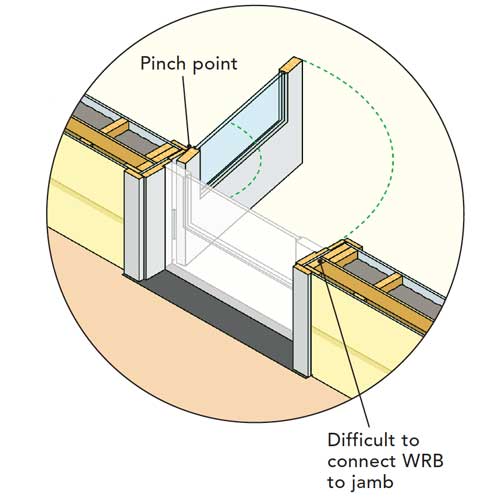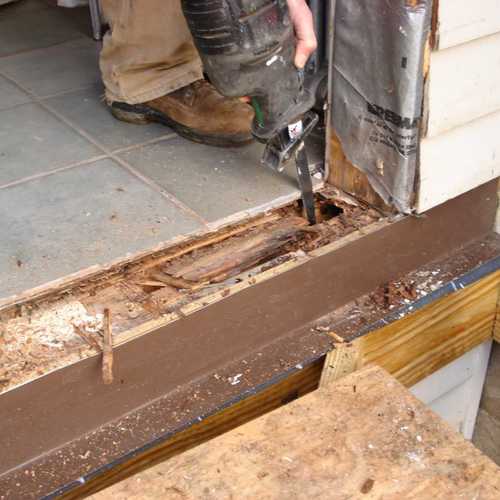
In high-performance building envelopes—those with thick walls and other details that allow for extra insulation and air-sealing—installing standard doors poses challenges that builders don’t typically encounter on more conventional builds. The placement of the door relative to the depth of the opening can affect the swing and the threshold details, and thermal bridging can be an issue. There’s no single solution, but I’ve had luck with the details shown here. They can be adapted to work with imported doors, which are slightly different than what most North American builders are used to, but they’re based on standard door and jamb profiles.
Gauging the swing and setback
Thick-wall assemblies can affect the degree to which a door opens as well as how easy or difficult it is to tie the water-resistive barrier (WRB) and air barrier into the jamb. Below are three approaches to consider.
 Thick-jamb solution
Thick-jamb solution
A standard door installed to the exterior makes for simple trim details, but it requires interior extension jambs, which means the door can only open a bit more than 90°. If there’s no perpendicular wall to open against, the door will bind against the trim, which can loosen hinges and damage both door and trim. Plus, the WRB and air barrier are typically at the sheathing, which makes it complicated to tie the door frame into those layers because they will align toward the middle of the door jamb.
Ideally, order a door with thicker jambs. There are 6 9/16-in. jambs available off the shelf—perfect for 2×4 construction with 2 in. of exterior foam—or you can build your own or buy custom for thicker wall assemblies. Locally, I can get builder-grade doors with 9 1/8-in. jambs, and have seen jambs up to 11 1/8 in. from other…
Weekly Newsletter
Get building science and energy efficiency advice, plus special offers, in your inbox.

This article is only available to GBA Prime Members
Sign up for a free trial and get instant access to this article as well as GBA’s complete library of premium articles and construction details.
Start Free TrialAlready a member? Log in












One Comment
Or, just make one yourself. In this case, a firetruck I was inspecting had an incorrect step so after removal, I took it home for my deep energy retrofit. Full 1/4" treadplate with return flange for drip edge.
Log in or become a member to post a comment.
Sign up Log in